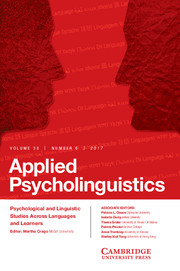Forfattere
Vassiliki Diamanti, Argyro Benaki, Angeliki Mouzaki, Asimina Ralli, Faye Antoniou, Sophia Papaioannou & Athanassios Protopapas
Abstract
This cross-sectional study examined the development of morphological awareness in Greek children 4–7 years old. A distinction was adopted between epilinguistic control, evidenced in judgment tasks and indicative of elementary levels of awareness, and metalinguistic awareness, evidenced in production tasks and indicative of full-blown conscious awareness. The morphological domains of inflectional and derivational morphology were specifically contrasted to determine whether they follow distinct developmental trajectories. Trial-level performance data from 236 children in four morphological awareness tasks as a function of age were modeled using generalized additive models. Significant performance increase with age was found for all four awareness tasks. The results further indicated that production of derivational morphemes was consistently more difficult than production of inflectional morphemes and judgment of derivational morphemes, whereas the differences between the two inflectional and between the two judgment tasks were not significant. This suggests that at these ages, epilinguistic control is similarly effective for the two morphological domains whereas full metalinguistic awareness of derivational morphology trails behind that of inflectional morphology, at least as measured by these specific tasks. The findings highlight the need for early tracking and finer distinctions within the domain of morphological awareness, to identify and potentially enhance the critical skills related to the development of vocabulary and reading comprehension.
